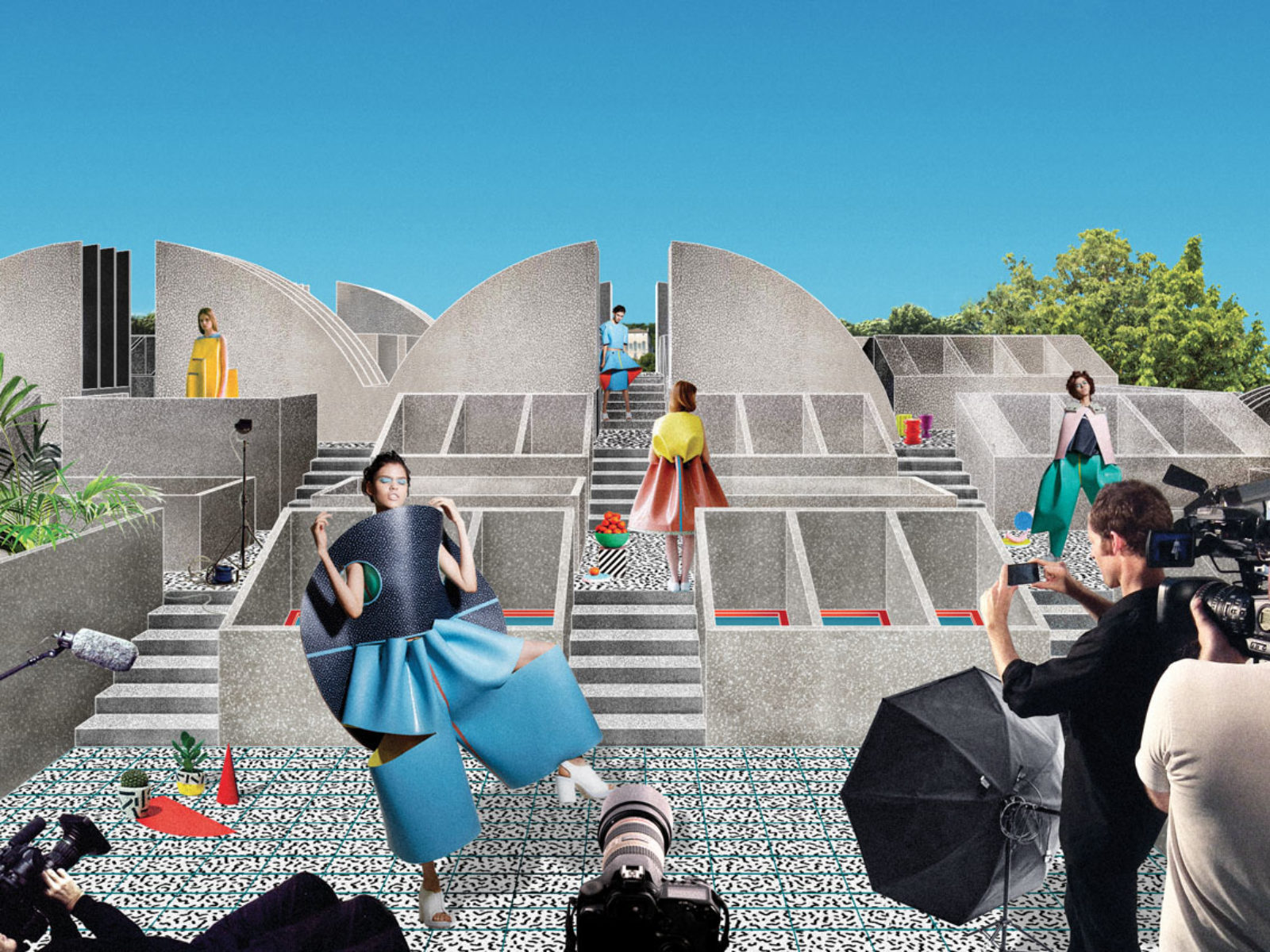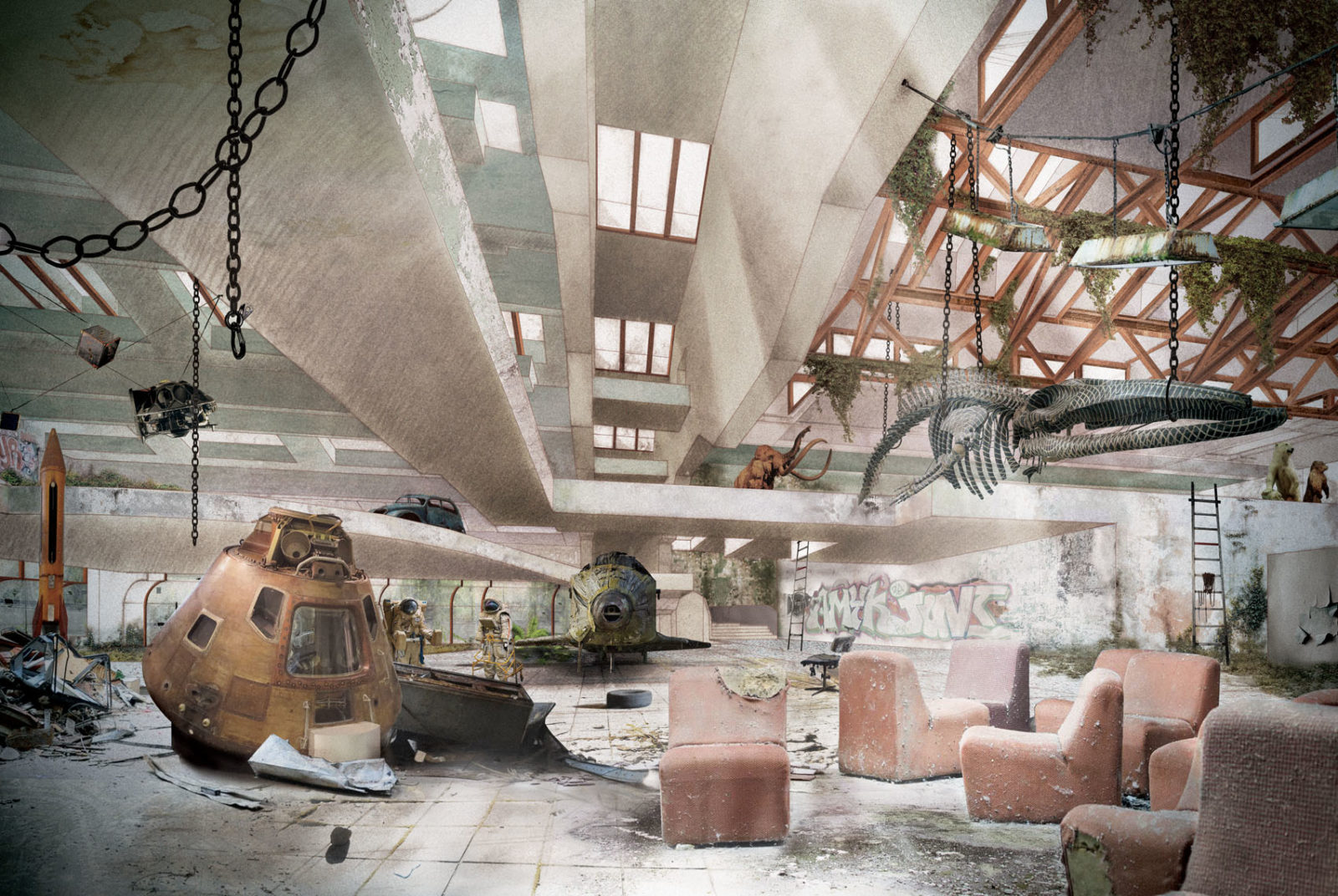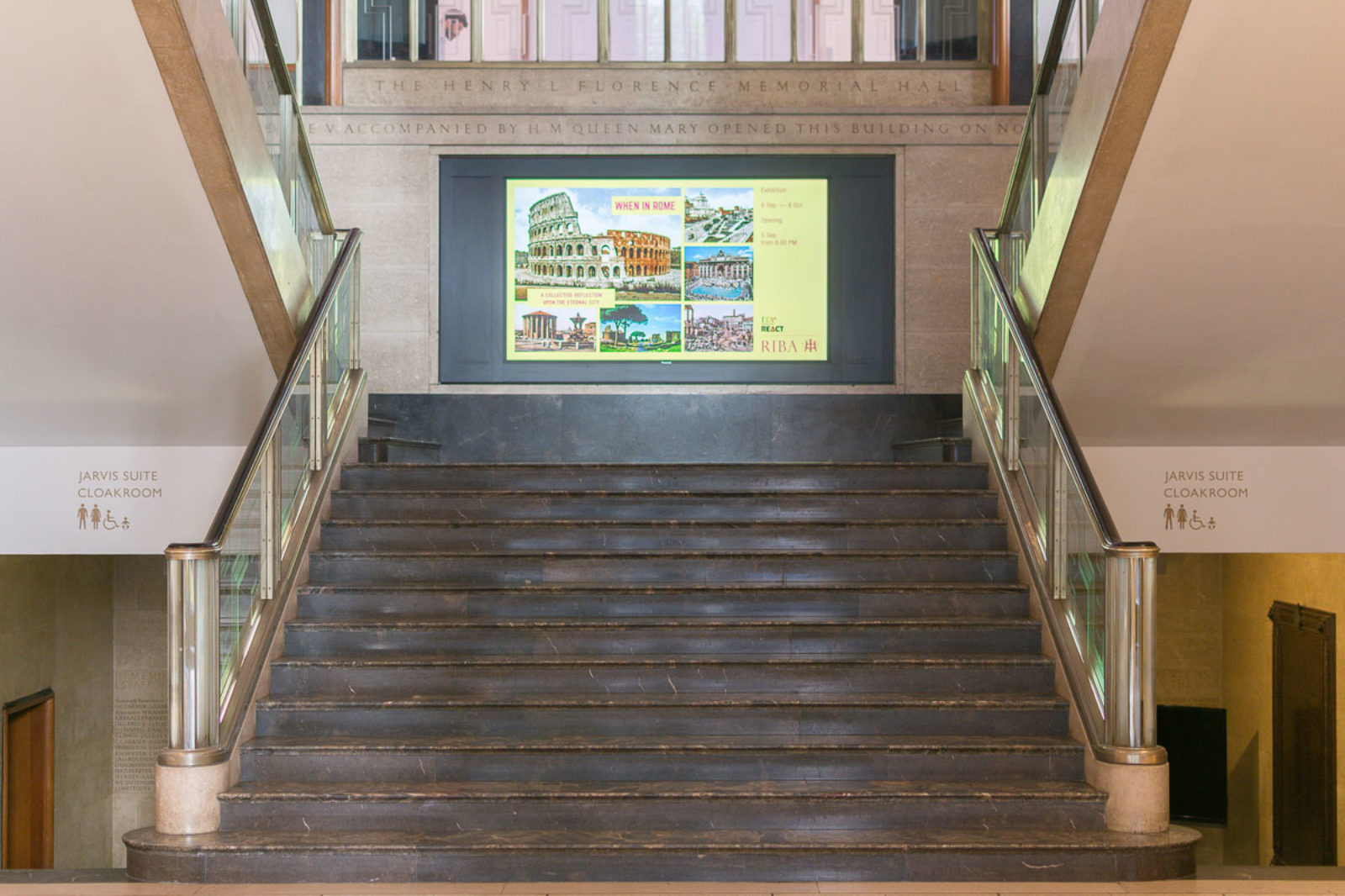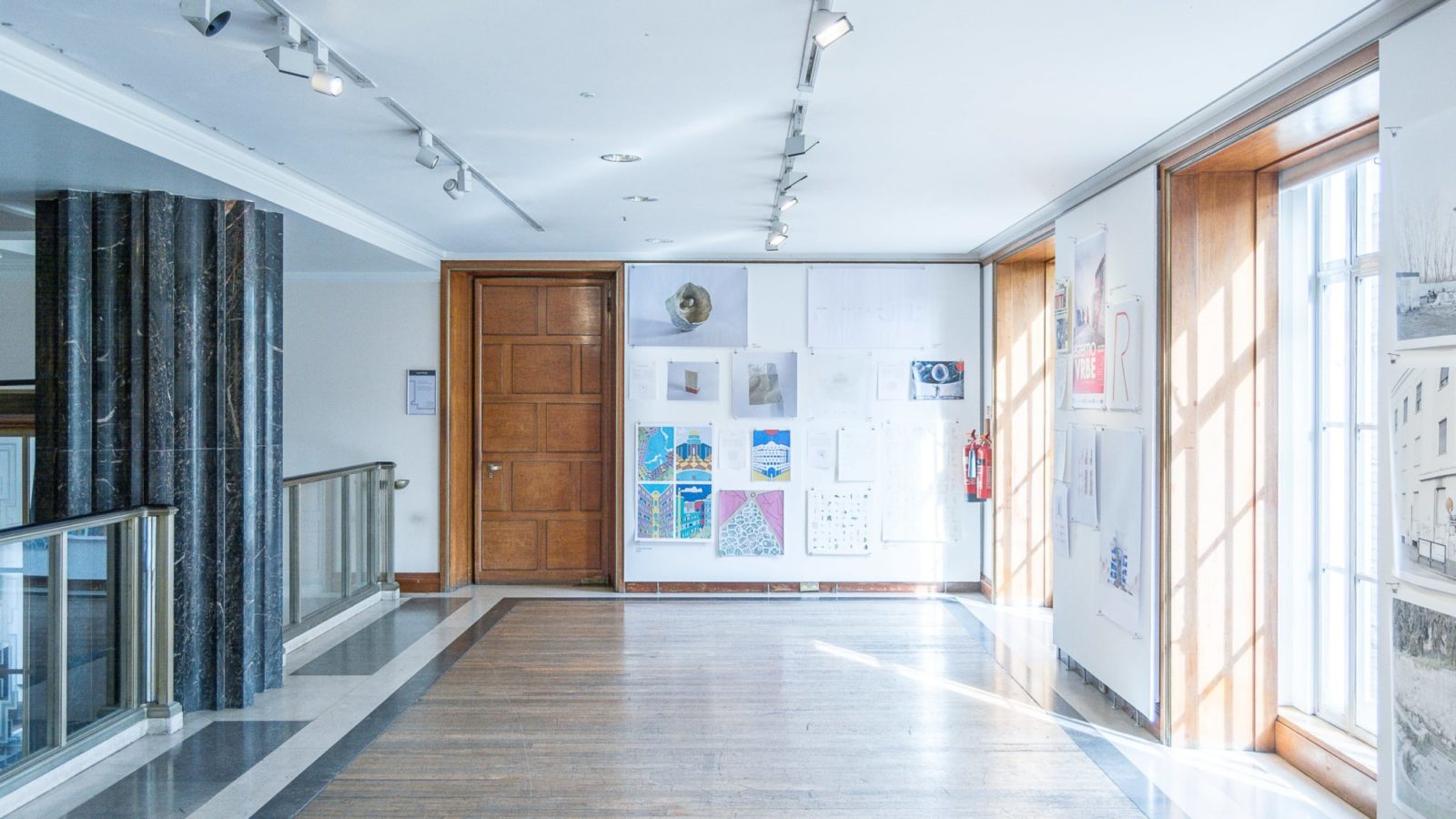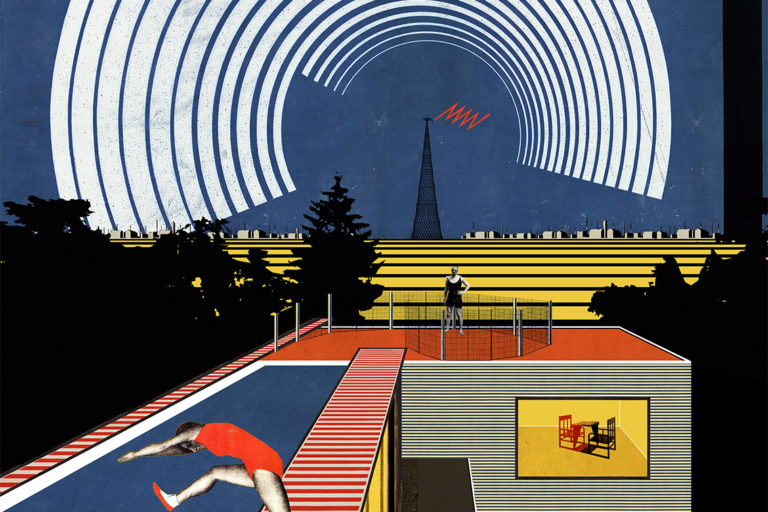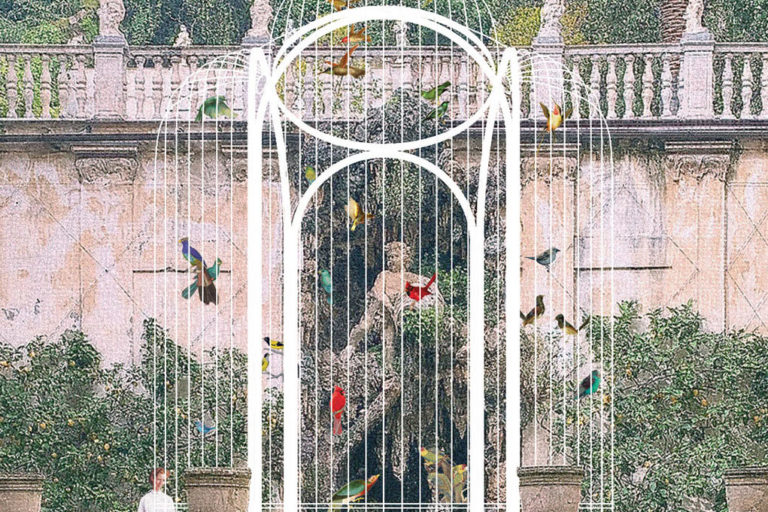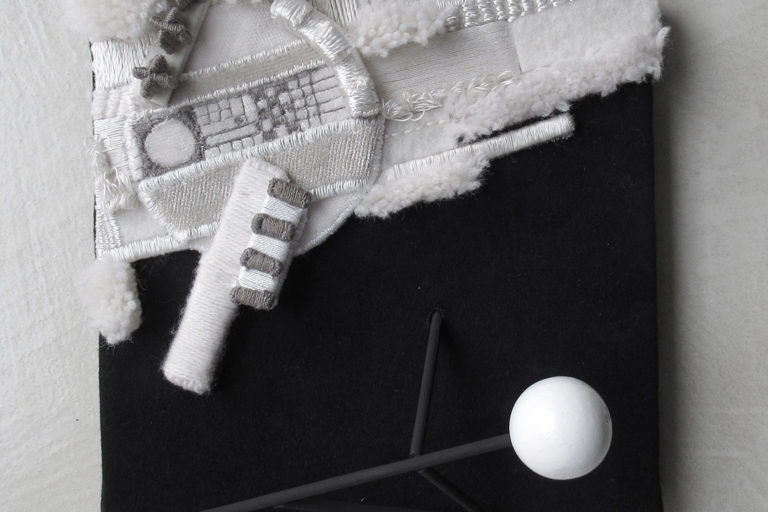Parallel Lives
Project always defines an alternative present. Architects try to imagine another reality, different from the one on act. We imagined three alternative presents about the unrealized project of a Science Museum in Via Giulia by Maurizio Sacripanti. Each picture describes one of these alternative, a post-truth that is always half fascinating, half disturbing.
In the first image, the Museum was inaugurated in 1984 with a worldwide celebration: Sacripanti’s work showed to the world that Rome was not only a city dealing with a bulky architectonic past, but also a dynamic European capital with a vision for its future. The Museum quickly became a city landmark and even after the openings of Hadid’s MAXXI Museum and Fuksas’s Congress Centre, it still remains the romans’ favourite contemporary building, often used as location for movies and commercials. This year, in a general trend that revamps the aesthetic of the ’80s, young fashion designer Valeska Jasso Collado chose the museum rooftop as a set for the photo shooting of her new collection. The chosen picture shows the iconic forms arranged on the rooftop, dealing with the baroque domes, the Tiber river and the Gianicolo. This sort of hanging garden looks at the city all around but also at the huge exposition space under it, through the skylight holes, in a way recalling the “Orti Farnesiani” and their relationship with the underground voids of the Domus Tiberiana.
In the second image, the Museum worked for twenty years, when its collection became obsolete and its maintenance costs became too high for the Municipality. When the Eataly group applyed for take over the building management, the Municipality could not refuse. They restored the building, updating its features and turning it in a landmark for foreign tourists in the city centre. The picture shows the mall entry on Via Giulia, designed by Sacripanti to mend the street front drawn by Bramante and to encourage people to enter the building passing through a huge moulded shop window that progressively moves back. In a way, the new commercial function of the building points out and improves this key feature of the original project, turning the ground floor of the former museum into a very popular public space, where people meets taking advantage of the free wi-fi and of the proximity to the old town centre.
In the last image, the Museum opened in 1990, after a troubled bureaucratic process. Thanks to this delay, the museum became outdated yet from the beginning and, without visitors, it fell into disrepair. The building slowly became an impressive ruin and today many architecture students and photographers enter illegally its huge piranesian space, following in Stalker group’s footsteps. The chosen picture points out the complexity of Sacripanti’s space and the dramatic effect of the skylights. Its actual ruined status strengthens the bound between the museum and a very roman idea of architecture as a deal between light and space, never mind its content.
_______
Frame 40×30
Sacripanti as Vignola – the museum rooftop as a landscape populated by iconic forms
Frame 50×50
Sacripanti as Bramante – the façade of the museum as a sculptural shop window on Via Giulia
Frame 91×61
Sacripanti as Piranesi – the huge interior space of the museum as an abandoned ruin
Il progetto è di per sé un presente alternativo. Chi progetta si sforza di immaginare una realtà differente da quella in atto. Abbiamo immaginato tre presenti alternativi per il progetto non realizzato di Maurizio Sacripanti per il Museo della Scienza in via Giulia. Ogni immagine descrive una di queste alternative, delle post-verità che presentano tutte aspetti affascinanti ed altri decisamente inquietanti.
Nella prima immagine, il Museo della Scienza è stato realizzato a tempo di record nel 1984 ed inaugurato con grande risonanza internazionale: l’opera di Sacripanti ha dimostrato al mondo intero che Roma è capace di coniugare il suo ingombrante passato con una visione del futuro degna delle maggiori capitali europee. Il museo è diventato presto un’icona della città e anche dopo la realizzazione del MAXXI di Zaha Hadid e della “Nuvola” di Massimiliano Fuksas, rimane l’opera di architettura contemporanea più amata dai romani, location di numerosi film e spot pubblicitari. Quest’anno, in un contesto internazionale che riscopre e rilancia l’estetica degli anni ottanta, la giovane stilista Valeska Jasso Collado ha scelto la terrazza del museo di via Giulia come set per fotografare la sua collezione. L’immagine scelta descrive i giochi formali dei volumi che popolano la terrazza di copertura, alludendo alle cupole barocche ma anche cercando un rapporto col Tevere e col Gianicolo. Questa specie di giardino pensile guarda la città che lo circonda, ma attraverso i lucernari si relaziona anche con il gigantesco spazio espositivo sottostante, in un modo che ricorda gli “Orti Farnesiani” e la loro relazione con le grotte sotterranee della Domus Tiberiana.
Nella seconda immagine, il Museo é stato realizzato ma dopo vent’anni di esercizio la sua collezione obsoleta non attirava più molti visitatori ed i costi di manutenzione della struttura erano molto alti. E’ a questo punto che il gruppo di distribuzione gastronomica Eataly ha fatto al comune di Roma un’offerta che l’amministrazione non ha potuto rifiutare: in accordo con la sovrintendenza, avrebbe ristrutturato filologicamente il manufatto, aggiornandolo in alcune sue finiture, e trasformandolo in un punto di riferimento per i turisti stranieri che frequentano il centro storico romano. L’immagine ritrae l’ingresso su Via Giulia, progettato da Sacripanti per ricucire il fronte strada tracciato da Bramante attraverso le parti cieche del prospetto e contemporaneamente invitando all’interno i passanti disegnando un grande serramento modanato che arretra progressivamente. Paradossalmente, la trasformazione in centro commerciale ha esaltato ancor di più questa caratteristica del progetto, trasformando il piano terra dell’ex museo in uno spazio pubblico frequentatissimo, dove darsi appuntamento, approfittando del wi-fi gratuito e della vicinanza con il centro storico.
Nell’ultima immagine, il museo è stato inaugurato nel 1990, dopo un iter faticoso e pieno di rallentamenti che di fatto lo hanno reso un museo già superato seppur appena terminato. Anche per questo, l’edificio è caduto rapidamente in disgrazia per mancanza di visitatori. Mentre l’amministrazione bandiva concorsi senza riuscire a trovare né un progetto né un finanziatore in grado di rivalutarlo, l’edificio si è trasformato lentamente in una grandiosa rovina e oggi è meta di studenti di architettura e fotografi che, seguendo l’esempio del gruppo “Stalker”, si introducono illegalmente in questo spazio piranesiano, illuminato da un sole spietato che filtra dai lucernari della copertura. L’immagine scelta mette in evidenza la spazialità complessa e grandiosa che costituiva uno dei punti di forza del progetto di Sacripanti. Il suo stato attuale di rovina rafforza il legame tra il museo e un’idea tipicamente romana dell’architettura come gioco di spazio e luce, al di là di funzioni e contenuti.
_______
Frame 40×30
Sacripanti come Vignola – la terrazza del museo come un paesaggio popolato da forme iconiche
Frame 50×50
Sacripanti come Bramante – la facciata del museo come una vetrina plastica su Via Giulia
Frame 91×61
Sacripanti come Piranesi – il gigantesco spazio interno del museo come una rovina
Contribution to Unbuilt Rome exhibition.
Opening: 5 May 2017 @ CAMPO, via della Marrana 94, Rome, Italy
Contribution to When in Rome, an exhibition on Rome – a first step towards the re-threading of an important tradition.
Opening: 5 September 2017 @ Royal Institute of British Architects, 66 Portland Place, London, United Kingdom
Photographer Valentino Danilo Matteis

